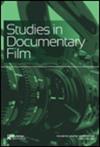圈养和水盐度对培养依赖性青蛙皮肤微生物群和水蛭壶菌感染的影响
IF 0.8
4区 综合性期刊
Q3 MULTIDISCIPLINARY SCIENCES
Transactions of the Royal Society of South Australia
Pub Date : 2022-06-15
DOI:10.1080/03721426.2022.2086358
引用次数: 0
摘要
世界正在经历第六次大灭绝,而过去几十年两栖动物数量的急剧下降是一个主要原因。致命的树突壶菌(Batrachochytrium dendroatidis, Bd)真菌的传播是一种主要的病原体,人们正在进行圈养繁殖计划,试图拯救濒临灭绝的种群。然而,圈养如何影响Bd感染和皮肤微生物群尚不清楚。我们鉴定了南澳大利亚蛙(criia signifera)的皮肤细菌,并表明它们的培养依赖性皮肤微生物群在随后的几年中从同一地点采样的队列中是适度稳定的。它们的微生物群在结构上也与同域蛙种Limnodynastes tasmaniensis不同,这表明它们具有特定的微生物特征。24只signifera被圈养4周,暴露在不同盐度的水中,在此期间,可识别的皮肤细菌种类多样性和丰富度显著减少,微生物结构发生变化。在圈养环境下,蛙类感染强度也显著降低,一些蛙类完全不受感染,而水的盐度水平并不是蛙类感染或皮肤微生物群的重要决定因素。本文章由计算机程序翻译,如有差异,请以英文原文为准。
Effect of captivity and water salinity on culture-dependent frog skin microbiota and Batrachochytrium dendrobatidis (Bd) infection
ABSTRACT The world is undergoing a sixth mass extinction, and the drastic decline of amphibians in the last several decades is a major contributing factor. The spread of the deadly Batrachochytrium dendrobatidis (Bd) fungus is a major causative agent, and captive breeding programs are under way to try and save endangered populations. However, how captivity affects Bd infection and the skin microbiota is not clear. We identified the skin bacteria of the South Australian frog Crinia signifera and showed that their culture-dependent skin microbiota is moderately stable in cohorts sampled from the same location in subsequent years. Their microbiota was also structurally different to that of a sympatric frog species, Limnodynastes tasmaniensis, indicating a specific microbial signature. Twenty-four C. signifera were placed into captivity for four weeks, exposed to a range of water salinity levels, during which time there was a significant reduction in identifiable skin bacterial species diversity, richness, and a change in microbial structure. The infection intensity of Bd was also significantly reduced in captivity, with some frogs becoming completely clear of infection, whilst water salinity level was not a significant determinant of Bd infection or skin microbiota.
求助全文
通过发布文献求助,成功后即可免费获取论文全文。
去求助
来源期刊
CiteScore
1.40
自引率
12.50%
发文量
17
审稿时长
>12 weeks
期刊介绍:
Published since 1880, the Transactions of the Royal Society of South Australia is a multidisciplinary journal that aims to publish high quality, peer-reviewed papers of particular relevance to Australasia.
There is a particular focus on natural history topics such as: botany, zoology, geology, geomorphology, palaeontology, meteorology, geophysics, biophysics, soil science and environmental science, and environmental health. However, the journal is not restricted to these fields, with papers concerning epidemiology, ethnology, anthropology, linguistics, and the history of science and exploration also welcomed.
Submissions are welcome from all authors, and membership of the Royal Society of South Australia is not required.
The following types of manuscripts are welcome: Reviews, Original Research Papers, History of Science and Exploration, Brief Communications, Obituaries.

 求助内容:
求助内容: 应助结果提醒方式:
应助结果提醒方式:


